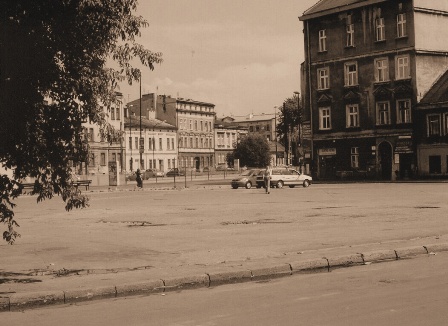Holocaust Education & Archive Research Team |
Ghettos
Krakow Introduction to the Ghettos of the Holocaust
Jewish Ghettos The Judenrat Judenrat Leaders Prominent Jews
| |||||||
The Krakow Ghetto
When the Germans occupied Krakow on 6 September 1939, approximately 90,000 Jews lived in the city. The persecutions of the Jews began almost immediately, on the Day of Atonement 1939, Jews were apprehended in the city and forced to fill in trenches dug for the defence of the town.
German officers and ordinary soldiers would, from time to time, seize Jews in the street and maltreat them. The favourite sport of the Germans was to order Jews to run while making them stumble, to force them to jump hurdles, beating ferociously those who could not jump, or to force Jews to undertake various gymnastic exercises.
In some instances, individual Jews were killed, or arrested and sent to concentration camps, from where very few, if any survived.
In October and December 1939, searches were conducted in every house by the SS and ordinary German soldiers. During such searches a curfew would be imposed on all Jews, and those showing themselves in the streets or on balconies would be shot on sight.
The official reason for these searches was that Jews were hiding jewellery, gold and foreign currency, which they were not permitted to keep in their possession. Much damage was done to Jewish property during the searches, which were carried out very thoroughly. German officers often confiscated various articles and food for their own personal use.
On the 23 November 1939 Hans Frank, the Governor General issued a decree ordering all Jews living in the General- Gouvernement, aged 12 or over, to wear an arm-band with the Star of David as from 1 December 1939.
During the winter, Jews were taken to clean the streets of snow. Jews would be seized in the streets and taken for forced labour, although the Jewish Community supplied the daily quota of labourers demanded by the German authorities.
In January and February 1940, all Jewish premises and enterprises, except small shops, were confiscated by the German authorities. A special trustee institution was established in the General- Gouvernement, called ‘Zentrale Treuhandstelle, which administered the confiscated property. The more important Jewish enterprises were handed over to Germans, the smaller and less important ones to Ukrainians and Poles.
The German authorities appointed a Jewish Council, the Judenrat, to be the chief authority for all Jews and the sole body that dealt directly with the German authorities. The Chairman of this body were:
-Dr Marek Bieberstein- -Dr Artur Rosenzweig- -Dawid Guter-
The precise duties carried out by the Judenrat were defined in Paragraph 5 of the order issued by Hans Frank on 28 November 1939:
‘The Judenrat has to carry out, through its President or Vice President, the demands of the German authorities. It will be responsible for their strict fulfilment to the smallest detail. The orders which it issues for the purpose of fulfilling German demands must be obeyed by all Jewish men and women
At the end of January 1940, the Stadthauptmann (Town Commander) Schmied proclaimed that the number of Jews in Krakow was too large, and that all Jews who were not employed on services of importance to the Germans would have to leave the town.
The 15 August 1940 was set as the time limit by which all those Jews were to leave voluntarily. Those leaving before the fixed time would be permitted to take with them their furniture, household utensils, clothes etc.
Until the middle of August 1940, up to 30,000 Jews left the city, most of them went to Warsaw, Kielce, Bochnia etc.
The number of those who had left Krakow was however, too small for the Germans. Schmied, therefore, took matters into his own hands regarding the removal of Jews from Krakow. He ordered the arrest of Dr Biberstein, Chairman of the Jewish Council, who was sentenced to 18 months imprisonment, he was later killed in Plaszow forced labour camp in 1944.
All Jews were ordered to obtain identity cards. While issuing the cards the German authorities decided who was to stay, and who was to leave the city. At the end of August 1940, several thousands of Jews left the town, taking with them 25kgs of baggage per head.
During the months October – December 1940, an influx of many Jews from the provinces took place. On the 25 November Dr Otto Wachter, Governor of the Krakow District, issued an order whereby;
The order was to take effect on 1 December 1940.
Following this order, another 25,000 Jews left the city by the beginning of 1941 approximately 13,000 Jews had remained in Krakow.
On 3 March 1941, Dr Otto Wachter issued another decree ordering all Jews to move into a Jewish Living quarter (referred to as Ghetto from now).
The Ghetto was situated into Podgorze, a suburb of Krakow, the poorest parts of Podgorze were converted into a ghetto and the Christian population evacuated. Jews were required to relocate to Podgorze by the 20 March 1941, and were permitted to take with them only 30kgs of their possessions. The rest was to be handed over to the German ‘Treuhandstelle’.
The actual transfer of the Jews lasted until the end of April 1941. At first the Jews were allowed to enter and leave the ghetto freely. Several weeks later, however, the gates of the ghetto were closed and nobody was allowed to leave the ghetto without a special permit.
In April 1941 a wall about 2-3 meters high was built along the boundaries of the ghetto with characteristics tops which bore a resemblance to matzevahs( jewish tombstones). Four gates provided access to the ghetto, the main gate in Podgorski Square and gates in Zgody Square, B. Limanowskiego and Lwowska Streets.
The gates were guarded by German and Polish Police, assisted by the local Jewish police formation, known as the Ordnungsdienst, which was led by one Symche Spira, before the war he was a carpenter by trade and an Orthodox Jew, who did not speak German or Polish fluently. In Krakow he was regarded as one of the best- known collaborator, the Germans had.
A German Labour Office (Arbeitsamt) was established in the ghetto, and about 60%of the Jewish population was employed on various enterprises and works outside the ghetto. Every worker received a permit to leave the ghetto and his/ her identity card was renewed every month. The wages were fixed by the Labour Office at between 4-5 zloty per day, which was the equivalent to 1kgs of bread.
In November 1941, the area of the ghetto was reduced. At the beginning of 1942, the German authorities decided to form a ‘Greater Krakow’ incorporating 29 villages of the vicinity. The number of Jews living in these places were very high, as many Jews from Krakow had found refuge there during previous expulsions. All Jews living in ‘ Greater Krakow’ were forced to move into the ghetto, which, consequently, became unbearably overcrowded. Each person was granted 4 cubic meters of space.
Special workshops for Jews were established in the ghetto. German factories supplied the raw materials and issued production orders. In this way a great number of Jews were employed and thus saved for immediate deportation.
In January 1942, SD and Security Police (SIPO) officers entered the ghetto and announced by loud speaker that all Jews had to hand over their furs and woollen garments. Anyone refusing to comply with this order would be shot. As a warning they executed one Jew who had concealed his furs.
In February 1942, 140 prominent Jews, mostly intellectuals, were arrested by Obersturmfuhrer Koerner, Obersturmfuhrer Heinemayer, Unterstrumfuhrer Vollbrecht of the Political Department of the SD and SIPO. They were deported to Auschwitz and shortly afterwards their families were notified of their death. Single arrests of Jews were a daily occurrence, those arrested were taken into the prison and from there sent in small groups to Auschwitz.
At the beginning of March 1942, all Jews were ordered to appear for registration, this process lasted until May, and every Jew was issued a special identity card.
At the beginning of June 1942 the first large scale deportation took place. Several weeks previously, Obersturmfuhrer Becher and Hauptscharfuhrer Kunde had been sent to Lublin, where they had received instructions as to the ways and means clearing ghettos and exterminating Jews.
They were briefed by the Head of Aktion Reinhard, Odilo Globocnik, SS and Polizeifuhrer Lublin District, Aktion Reinhard was the code name, for the mass murder of Polish Jews programme.
On the 1 June 1942 the ghetto was surrounded by German police and SS.
SS/SD and SIPO Officers and SS men entered the ghetto among them were Obersturmbannfuhrer Willi Haase, Obersturmfuhrer Becher and Hauptscharfuhrer Heinrich.
In order to calm the Jewish population and to conceal the real purpose of the Aktion the SD and SIPO officers told the Jews that they intended to carry out a resettlement of the Jews of Krakow, as the ghetto was overcrowded, and that no deportations was to take place. All identity cards had to be submitted for stamping.
Those Jews who worked in German factories in the town or in the workshops of the ghetto, and those who could prove that their work was essential to the Germans or for the maintenance of the ghetto were permitted to remain, together with their wives and children under the age of 14.
All cripples and others who were not fit to work were marked for deportation – they were permitted to take with them all valuables in their possession and baggage not exceeding 20kgs.
They were assembled on Zgody Square, where virtually all of their possessions were confiscated, apart from a small amount of money, which served to point to a resettlement not a deportation Aktion.
After the crowd had assembled the SD/SS men took photographs of the Jews on horse-drawn wagons, from the balcony of the Eagle Pharmacy. This was done as evidence to illustrate the resettlements were being done in a humane way.
After the photographs were taken the Jews were brutally chased from the wagons, with much shouting and beatings,
The crowd was escorted to the railway station in Prokocim and sent in wagons to the Belzec death camp, where they all perished. About 150 Jews who could not keep pace, were shot on the spot. The number of Jews deported in this Aktion was 7,000.
The German authorities were still not satisfied with the numbers of Jews deported and on 5 June 1942 SS/SD/SIPO officers again entered the ghetto and undertook another examination of the Jews identity cards.
The ghetto was surrounded by SS and Schutzpolizei to ensure there were no escapes, about 4000 Jews were deported to Belzec, in a similar manner to the previous ghetto occupants.
On 25 June 1942 SS and Polizeifuhrer Julian Scherner proclaimed a further reduction of the ghetto area, which now covered one third of a square mile.
The second deportation action on 27- 28 October 1942 were organised in a similar manner to the June deportations, and it covered the whole ghetto.
Deportees were gathered at Zgody Square and were marched to Plaszow station and from there they were transported in cattle cars to the Belzec death camp. The number of people transported to their deaths at Belzec was approximately 4,500.
Each deportation resulted in a reduction of the ghetto area. Soon working squads assigned to sort Jewish property appeared in the area from which Jews had been deported. Furniture and other valuables were stolen from deserted flats and deposited in a special storage area in Jozefinska Street.
In early December 1942 the Krakow ghetto was divided into Ghetto ‘A’ for the working Jews, and Ghetto ‘B’ for the non-workers, the elderly the sick, the children. This was an important step in the preparation for the final liquidation of the Krakow Ghetto.
At that time construction of the forced labour camp at Plaszow, on the site of a former Jewish cemetery, was already underway. After SS Untersturmfuhrer Amon Göth took command of the camp in February 1943 construction of the camp gained impetus. Most workers employed in the camp who initially commuted from the ghetto, were housed in barracks in the camp.
Due to the rapid pace of work on the development of the camp enforced by Amon Göth the liquidation of the Krakow Ghetto approached.
On 13 March 1943 the commander of the SS and Police in Krakow district, SS Oberfuhrer Julian Scherner issued the order for the liquidation of the ghetto.
It was to be carried out in two phases on 13 March (Saturday) Ghetto ‘A’ was liquidated and about 6000 residents were deported to the labour camp in Plaszow.
On 14 March(Sunday) Ghetto ‘B’ where the non-working – the elderly, the sick and children aged up to 14 was liquidated. Approximately 3,000 people were killed during this Aktion. Some of them were loaded into lorries and sent to Auschwitz – this was the only mass transport of Jews from Krakow to Auschwitz concentration camp.
The Aktion was supervised by SS Sturmbannfuhrer Willi Haase, the Chief of Staff of the SS and Police for Krakow district and SS Untersturmfuhrer Amon Göth. *See the page "Zgody Square" for a more detailed description, of the deportations from Krakow.
After the liquidation of the ghetto Jewish policemen and the last members of the Judenrat were sent to Plasow. Komissar Dawid Gutter was liquidated in Plaszow in December 1943, immediately after his arrival.
Symche Spira was released from Plaszow at the request of the Gestapo, but re-arrested and imprisoned there again in December 1943. Spira, and other members of the former ghetto police and their families were executed in 1944, on the personal orders of Commandant Göth.
After the liquidation of the ghetto and the looting of Jewish property, the houses in Podgorze were inhabited by poor Polish families.
There are a number of reminders today still visible of the former ghetto, these include the Eagle Pharmacy, Infectious Diseases Hospital, Jewish Welfare Self –Help building, the Jewish Hospital, the Arbeitsamt, the Jewish Community building, the Zucker Synagogue, Julius Madritsch factory, and at various places fragments of the ghetto walls.
Photos of what is left may be found in the many Image Galleries on the H.E.A.R.T website.
Sources: Belzec – Robin O’Neil The Cracow Ghetto 1941 –1943 – Anna Pioro Encyclopaedia of the HolocaustPhotographs and DocumentsHolocaust Historical Society USHMM
Copyright SJ & Carmelo Lisciotto H.E.A.R.T 2007
|
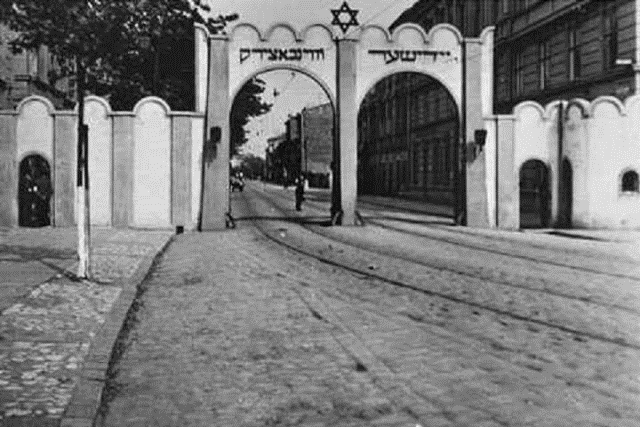
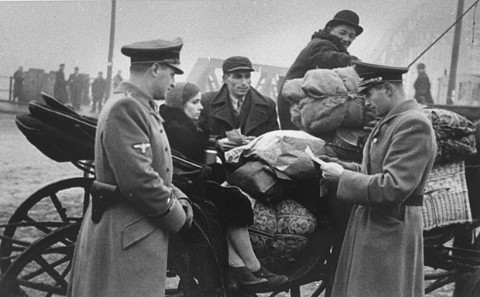
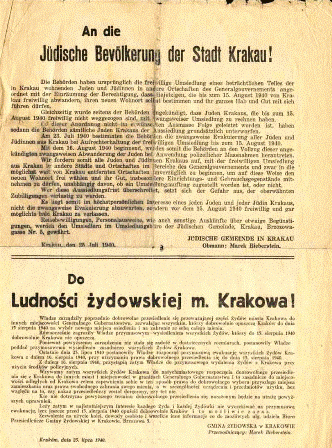



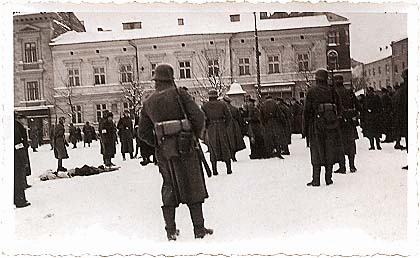
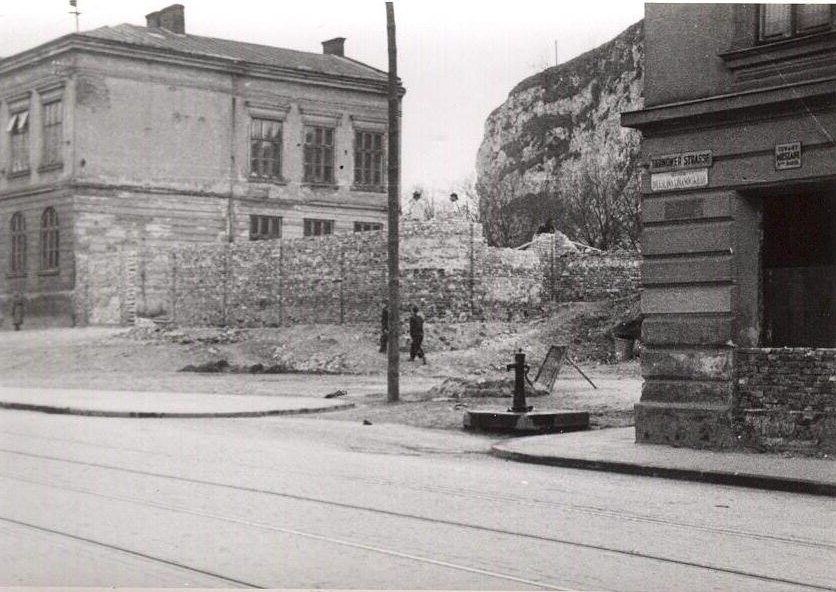
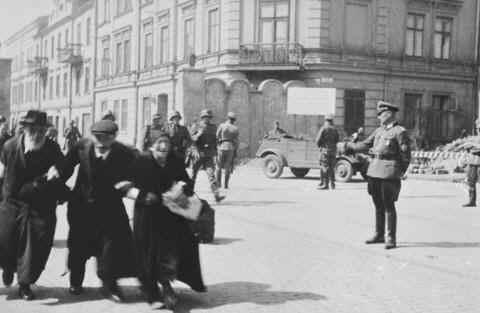
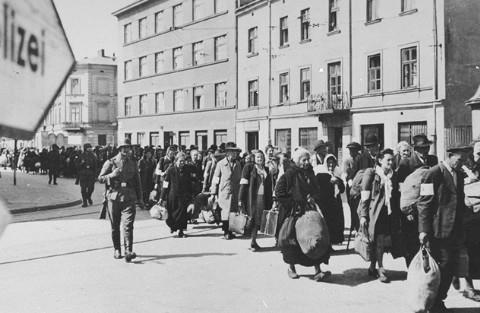
.jpg)
